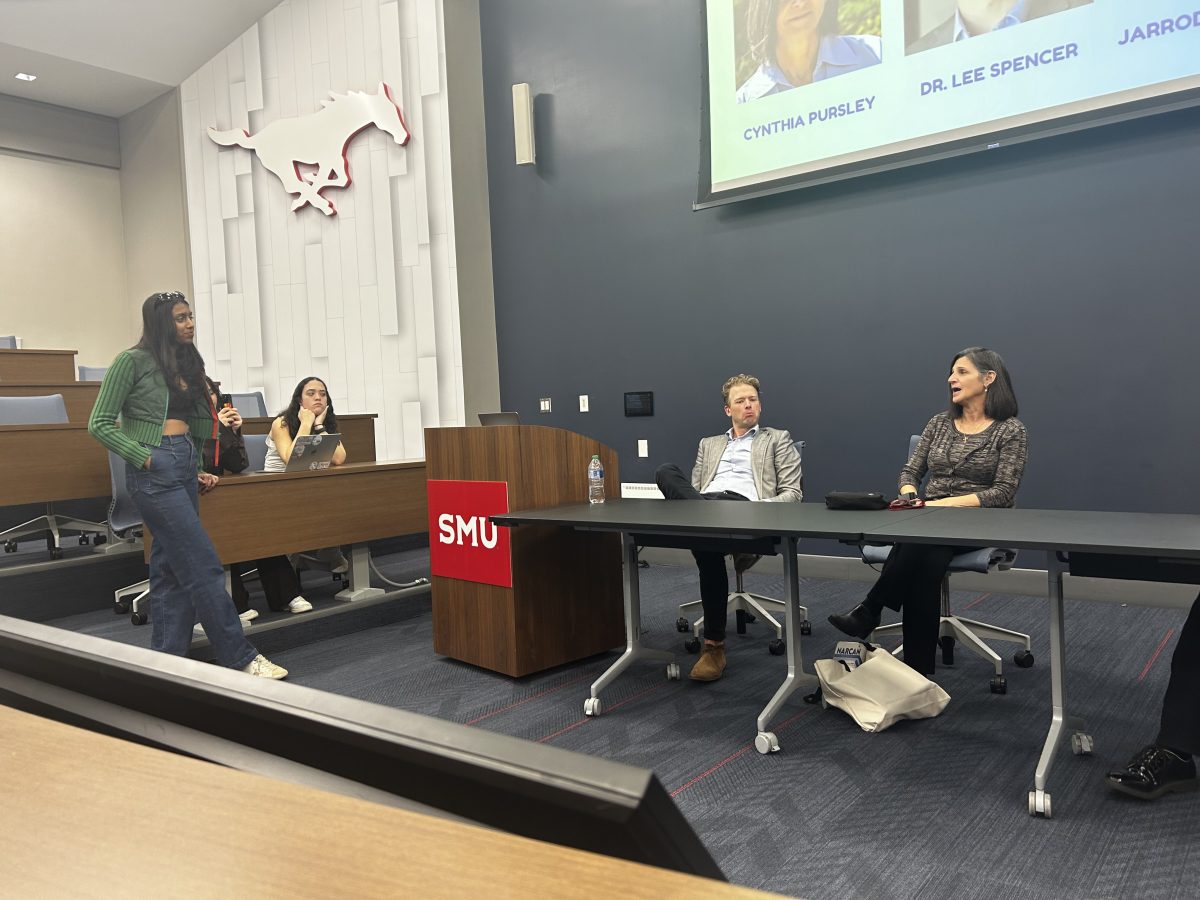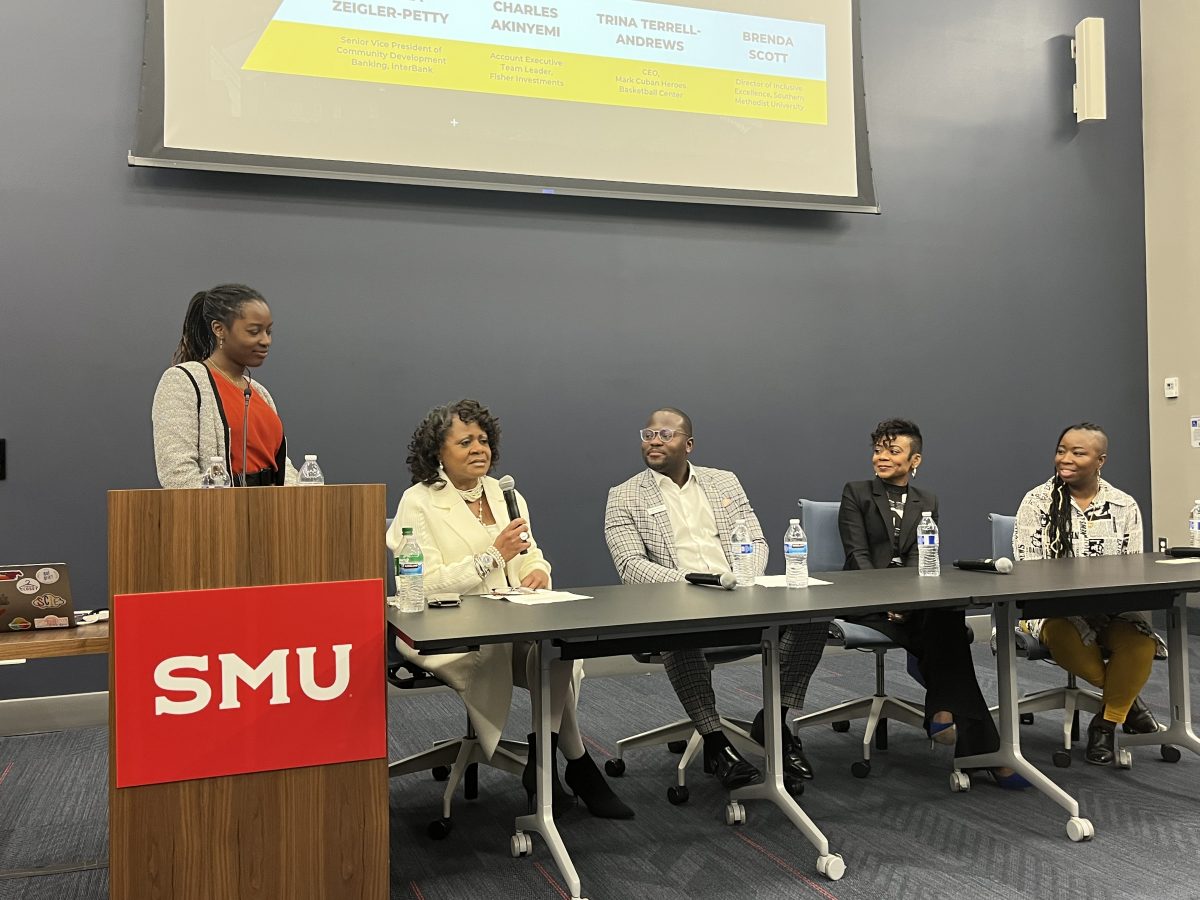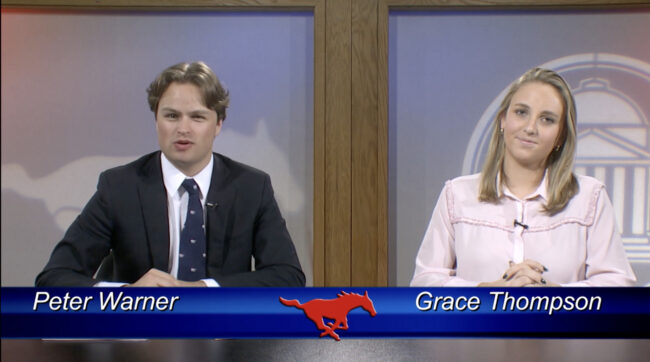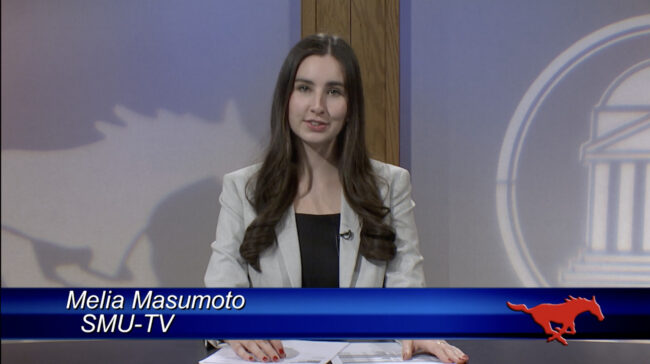Joseph Redwine Patterson remembers what SMU was like more than 60 years ago. Pep rallies, bonfires and a student handbook called “The M Book” were all a major part of SMU tradition — school spirit was high.
Many students, like former student body president Jake Torres, and alumni, like Patterson, believe school spirit isn’t as high today as it was back then and are working to bring the university back to its roots.
Patterson, who graduated in 1949, was a part of (what was then called) Student Council and the cheerleading and football teams— not at the same time, though.
He was head cheerleader in ‘47 and ‘48, president of the student body in ’48 and ’49 and was on the football team in ‘44.
Patterson said he remembers what school spirit was like during the Doak Walker days (Walker won the Heisman in 1949).
“We just continued what were the traditional chants, songs, yells and activities,” Patterson said.
Almost 40 years later, the National Collegiate Athletic Association struck SMU with the most stringent penalty collegiate football has ever seen — the death penalty.
The NCAA gave SMU the death penalty in 1987 for violating several rules and regulations, including paying players.
The university was already on probation in 1985 for recruiting violations.
With the implementation of the death penalty, SMU’s entire 1987 schedule was cancelled, and the team could only play seven games in the ’88 season, all of which had to be away games.
Therefore, SMU opted not to participate in the 1988 season
The Mustangs were also not allowed to participate in a bowl game until 1989.
In addition to having its schedule cancelled, the university had to cut back on the amount of scholarships it gave to football players.
However, the death penalty affected more than just the football program.
Elise Holmes, who graduated from SMU in 2008, said the death penalty had a dramatic affect on school morale.
“It killed SMU spirit,” Holmes said. “I really do blame the death penalty for the void of school spirit that we had for those 15 years.”
Holmes was a cheerleader for three and a half years at SMU and was the cheer captain during her senior year.
She said, although it might not be a fair thing to say, football does influence school spirit.
“In this country, I think football really drives spirit at a university and, you know, having that basically taken away from us really hurt things,” she said.
Patterson thinks the decline in school spirit started much earlier.
One of Patterson’s former cheerleading teammates, Lawrence Herkimer, started the National Cheerleaders Association in the 1970s.
As a result, cheerleading became more of a competitive sport.
Patterson believes this switch was part of what led to the decline in school spirit.
“The school spirit is not a competitive sport,” Patterson said. “It’s a spirit that permeates the whole university and gives it identity.”
Holmes disagrees. What attracted her to cheerleading was the athleticism and the competitive nature of the sport, but she believes the two are not exclusive.
She doesn’t think you have to choose between the two.
“Cheerleading has evolved and changed but I don’t think that’s taken away from school spirit,” she said.
Whether as a result of the death penalty or the starting of the NCA, most agree that SMU school spirit has declined since its earlier years.
“When I got there, we were still kind of in our dark years,” Holmes said.
However, students on campus are working together to revive that old school spirit and tradition.
Last year, Torres met with organizations around campus to try and invoke change.
Torres believes school spirit is there, you just can’t always see it.
“I think that whenever you talk to the students, people do love this university and they love the school, but that doesn’t always translate,” he said.
Torres also met with Brandy McCollum, SMU spirit coordinator and cheer coach, to talk about bringing back some of SMU’s old chants, cheers and yells, which Patterson told him about.
Additionally, Torres met with Patterson many times to find out what students did in the 1940s to cultivate school spirit.
Many of the chants and yells were in “The M Book,” which isn’t around anymore.
“The M Book” was a student handbook published by the YMCA starting in 1916.
The book was published until 1962 and contained information on clubs, sports, proper clothing attire, student government, traditions, cheers and much more.
Over the next 40 years, the handbook changed its name eight times, including names like “SMU Enchiridion,” “Peruna Express” and “Student Handbook.”
Over the years, traditions and cheers were taken out of the handbook.
All that is left in it today are university regulations and a planner for incoming students.
“There are some awesome things we have forgotten which is just really sad,” Torres said.
One of the traditions students don’t practice regularly anymore is pep rallies.
Patterson said students used to have bonfires and pep rallies before almost every game.
According to Patterson, a pep rally “is one activity where all the students participate because it doesn’t matter what your background is, what your race is, what your religion is…you just come to the pep rally and hope you beat the hell out of A&M.”
Torres is also good friends with former Aggie student body president Jacob Robinson.
A&M is a school that is often known for its school spirit.
Traditions like Aggie Muster, Silver Taps, Gig ‘em, “Howdy!,” the 12th man and midnight yells are all an intrinsic part of the university.
Robinson’s friend David Benac, a yell leader at Texas A&M, said tradition is just a part of their culture. Benac said a saying they have is, “If it happens once, it’s by chance. If it happens again, it’s tradition.”
It’s that type of tradition that Holmes, Patterson, SMU students and alumni think can keep morale up through the tough times.
“I think it’s the tradition that people really enjoy and appreciate, and I think, in that case, SMU is getting better,” Holmes said.
Several students agree that school spirit is on the rise. But who is responsible for leading the revival?
Patterson says, although groups like the cheerleaders, the band and student senate are role models, the responsibility lies in the hands of the general student body.
“The school spirit belongs to the students, nobody else,”
Patterson said.
However, according to Holmes, students might be less likely to invest themselves in the university if they move off campus their sophomore year
SMU plans to have incoming students live on campus for their first two years. Holmes thinks this will help cultivate school spirit and create a more tightly knit community.
“It’s difficult when people move off campus as sophomores, because I think they naturally disengage from the campus and campus life,” Holmes said.
She thinks the proposed housing requirement will keep students involved and get them invested in the university, so they will continue to be a part of the school once they become juniors and seniors.
Whether through new student programs, old yells or new housing requirements, Holmes said students will have to work to regain that Mustang Express school spirit.
“It’s going to take a culture shift to really make this happen,” she said.
















